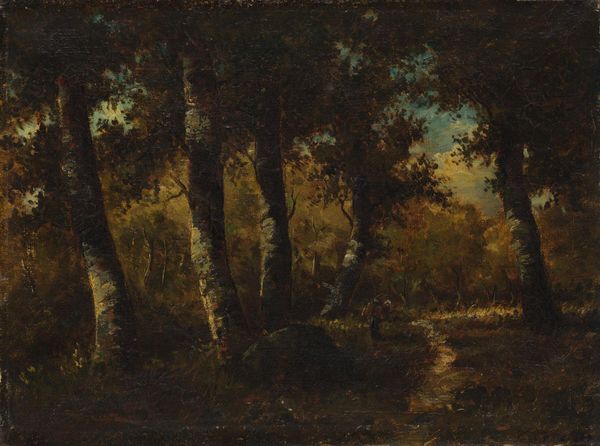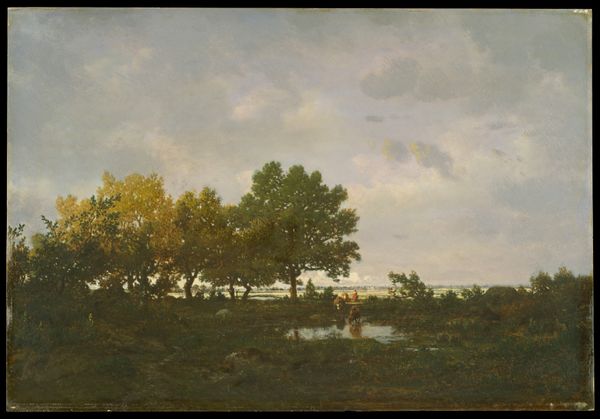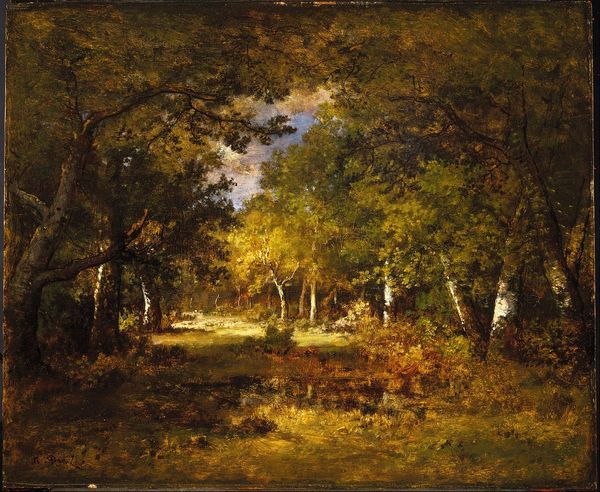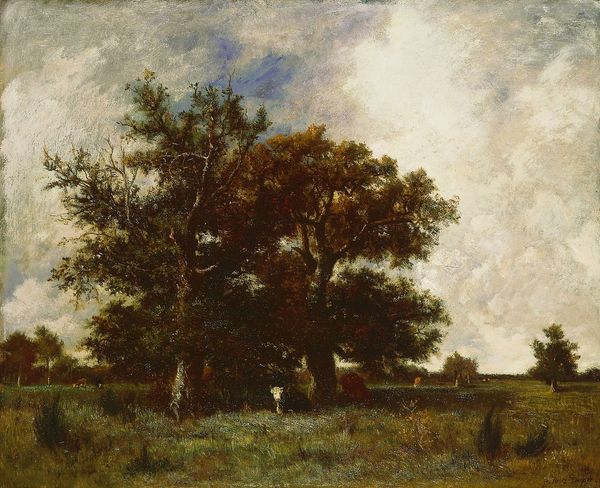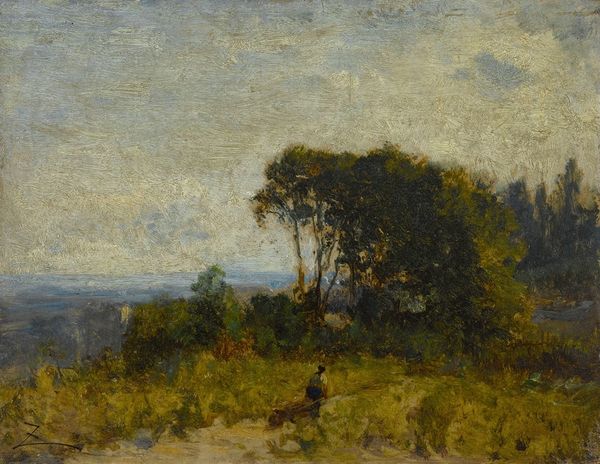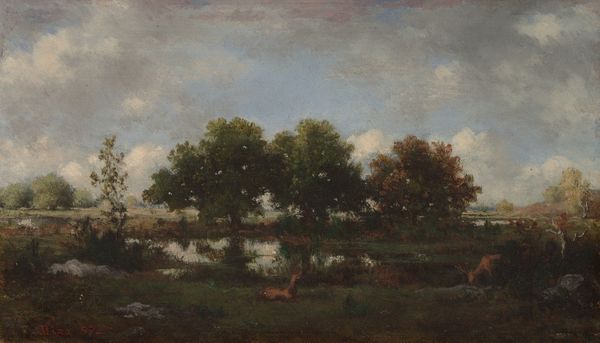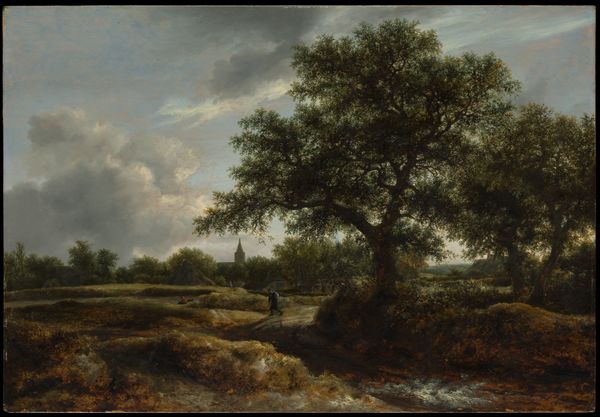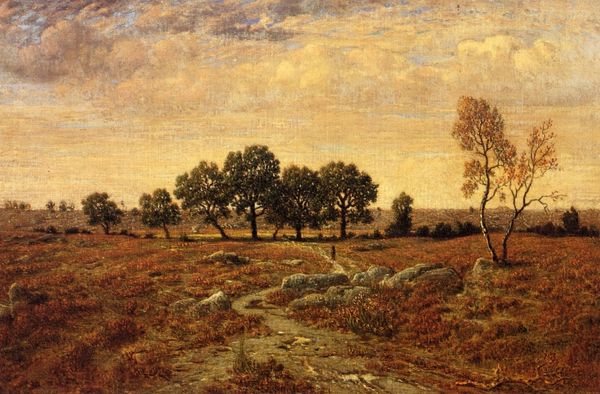
The Edge of the Woods at Monts-Girard, Fontainebleau Forest 1852 - 1854
0:00
0:00
Dimensions: 31 1/2 x 48 in. (80 x 121.9 cm)
Copyright: Public Domain
Editor: We’re looking at Théodore Rousseau's “The Edge of the Woods at Monts-Girard, Fontainebleau Forest,” made between 1852 and 1854 using oil paint. The painting has such a grounded, almost tactile feel to it. What catches your eye in this work? Curator: My interest lies primarily in how Rousseau’s choice of materials and plein-air technique reflects broader societal shifts in artistic production. Look at the earthiness, the very stuff of the forest rendered meticulously in oil. Consider the shift toward landscape painting as a subject – this signals a new relationship between humans and the natural world driven by urbanization and industrial change. Does that material reality resonate with you? Editor: Yes, absolutely. I hadn’t really connected it, but this focus on nature, in a tangible way, must have been a contrast to the growth of cities at the time. Did that also affect where and how the paint itself was produced? Curator: Precisely. The industrial revolution changed pigment production; we start to see new colours emerge and become widely accessible. This work provides insights into how artists' tools were evolving with industrial progress and simultaneously turning to nature, in their direct process. So, how does understanding this production context shift your perception of this piece? Editor: Thinking about it that way, it’s almost like Rousseau is making a statement about the changing world, using its very own tools – new materials, the move towards working in nature directly – to capture something that’s in danger of disappearing. I'll definitely look at landscape paintings with new eyes. Curator: Exactly. It encourages us to consider how artistic expression is intrinsically tied to the material conditions of its creation. And it reminds us that artistic choices often mirror and respond to broader socio-economic transformations.
Comments
No comments
Be the first to comment and join the conversation on the ultimate creative platform.
